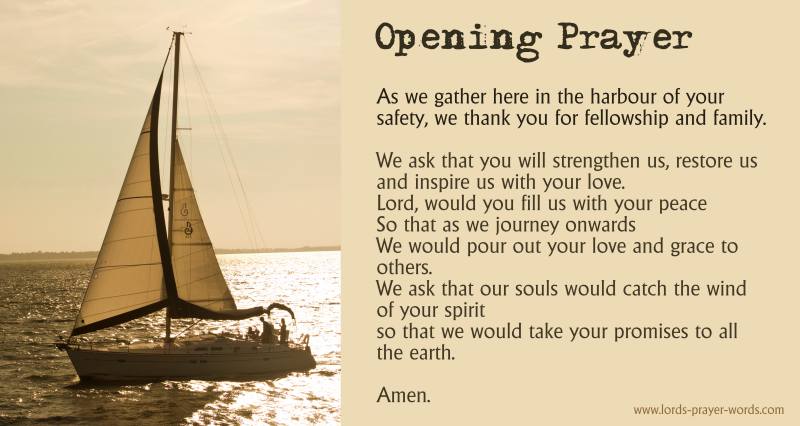Introduction
Prayer is an important part of any worship service. Not only does it help us connect with God, but it can also help us focus on what we’re doing and provide encouragement to one another. In this blog post, we will be sharing some prayers that can be used during worship services.
Purpose of Prayer
Prayer has long been recognized as an important component of worship. Prayer can be used to reflect on the purpose of worship, to ask for guidance during the service, and to connect with God.
The purpose of prayer can be explored in several ways during a worship service. One approach is to pray for individuals who are in attendance, including members of the congregation and those who are not physically present. Another way to pray is to contemplate the purpose of worship together as a congregation. Finally, prayer can be directed specifically toward God during the service.
Whatever your method of exploring the purpose of prayer, it is important to remember that prayer is not only a means of communication with God; it is also a time for refuge and refreshment. Whether you are alone or in a large group, take time during prayer to relax and connect with God.
Types of Prayers
The prayer in worship service can be categorized into four types: petition, intercession, thanksgiving, and blessing.
Petition prayers are requests for things that the worshiper desires, such as a request for God’s guidance or help.
Intercession prayers are prayers of petition and supplication directed at one or more persons or objects.
Thanksgiving prayers express thanks for blessings received from God or others, such as blessings on the congregation or on the minister.
Blessing prayers give thanks for all the good things in life and ask for continued blessings.
What is prayer?
Prayer is a word derived from the Latin prex, meaning “earlier” or “foremost”. Prayer is an invocation to God or a request for help, either in private or public. Prayer can be formal or informal, personal or public.
Prayer has been practiced throughout history and across cultures. Some of the common types of prayer are petitionary (seeking favors from God), intercessory (requesting help from others), contemplative (engaging in deep thought about God), and thanksgiving (expressing gratitude for blessings received).
Prayer can be used as a way to connect with God, find peace and relaxation, and develop a closer relationship with Him. It can also be used as a tool to improve mental strength, concentration, and physical health.
What are the components of prayer?
The components of prayer are repentance, petition, thanksgiving and intercession. Prayer should be personal, such as addressing God as “Father,” “Lord,” or “Dear Heavenly Father.” When praying aloud, it is important to be sincere and earnest in your petitions.
How can we make prayer more personal?
One way to make prayer more personal is to pray with a personal agenda in mind. Ask God to help you identify areas of your life where you need more strength or guidance, and then offer your prayers specifically targeting those needs. Furthermore, be sure to take time each day to review your thoughts and feelings towards Him, letting Him know that you are open and interested in receiving His guidance and love.
Another way to make prayer more personal is to focus on the moment. Instead of thinking about what you want from God or how you will respond when faced with a difficult situation, simply allow yourself to be enveloped by the present moment. This simple practice can help you connect more deeply with the Divine.
How can we use prayer to improve our spiritual lives?
Prayer can be a powerful tool for improving your spiritual life. When used correctly, prayer can help you connect with God and learn more about your spirituality. Here are some tips for using prayer to improve your spiritual life:
1. Make time for prayer every day. Prayer can be a valuable way to connect with God, and it’s important to make time for it every day. Dedicate at least five minutes each morning and evening to pray with focus and intention.
2. Ask God for guidance. Prayer is a way to communicate with God, and it can be helpful to ask Him for guidance on specific spiritual matters. When you’re prayerful, you’ll be able to hear His voice more clearly and understand His purposes for you in life.
3. Seek out spiritual friends. Prayer is a personal experience, but it can also be helpful to seek out spiritual friends who will support you in your journey towards spiritual growth. Connect with people online or in other settings who share your values and interests, and give them a chance to join you in prayer.
4. Pray for others. When we pray for others, we’re not just praying for them – we’re also opening our hearts and minds to
Conclusion
Thank you for coming to our worship service today. We hope that you have had a time of rest and relaxation following our celebration of Easter. As we start this new week, may the Lord bless us with His presence and help us to follow Him in worship today. Amen.
Prayer For Worship Service
Introduction
Prayer is an important part of any worship service. Not only does it help us connect with God, but it can also help us focus on what we’re doing and provide encouragement to one another. In this blog post, we will be sharing some prayers that can be used during worship services.
Purpose of Prayer
Prayer has long been recognized as an important component of worship. Prayer can be used to reflect on the purpose of worship, to ask for guidance during the service, and to connect with God.
The purpose of prayer can be explored in several ways during a worship service. One approach is to pray for individuals who are in attendance, including members of the congregation and those who are not physically present. Another way to pray is to contemplate the purpose of worship together as a congregation. Finally, prayer can be directed specifically toward God during the service.
Whatever your method of exploring the purpose of prayer, it is important to remember that prayer is not only a means of communication with God; it is also a time for refuge and refreshment. Whether you are alone or in a large group, take time during prayer to relax and connect with God.
Types of Prayers
The prayer in worship service can be categorized into four types: petition, intercession, thanksgiving, and blessing.
Petition prayers are requests for things that the worshiper desires, such as a request for God’s guidance or help.
Intercession prayers are prayers of petition and supplication directed at one or more persons or objects.
Thanksgiving prayers express thanks for blessings received from God or others, such as blessings on the congregation or on the minister.
Blessing prayers give thanks for all the good things in life and ask for continued blessings.
What is prayer?
Prayer is a word derived from the Latin prex, meaning “earlier” or “foremost”. Prayer is an invocation to God or a request for help, either in private or public. Prayer can be formal or informal, personal or public.
Prayer has been practiced throughout history and across cultures. Some of the common types of prayer are petitionary (seeking favors from God), intercessory (requesting help from others), contemplative (engaging in deep thought about God), and thanksgiving (expressing gratitude for blessings received).
Prayer can be used as a way to connect with God, find peace and relaxation, and develop a closer relationship with Him. It can also be used as a tool to improve mental strength, concentration, and physical health.
What are the components of prayer?
The components of prayer are repentance, petition, thanksgiving and intercession. Prayer should be personal, such as addressing God as “Father,” “Lord,” or “Dear Heavenly Father.” When praying aloud, it is important to be sincere and earnest in your petitions.
How can we make prayer more personal?
One way to make prayer more personal is to pray with a personal agenda in mind. Ask God to help you identify areas of your life where you need more strength or guidance, and then offer your prayers specifically targeting those needs. Furthermore, be sure to take time each day to review your thoughts and feelings towards Him, letting Him know that you are open and interested in receiving His guidance and love.
Another way to make prayer more personal is to focus on the moment. Instead of thinking about what you want from God or how you will respond when faced with a difficult situation, simply allow yourself to be enveloped by the present moment. This simple practice can help you connect more deeply with the Divine.
How can we use prayer to improve our spiritual lives?
Prayer can be a powerful tool for improving your spiritual life. When used correctly, prayer can help you connect with God and learn more about your spirituality. Here are some tips for using prayer to improve your spiritual life:
1. Make time for prayer every day. Prayer can be a valuable way to connect with God, and it’s important to make time for it every day. Dedicate at least five minutes each morning and evening to pray with focus and intention.
2. Ask God for guidance. Prayer is a way to communicate with God, and it can be helpful to ask Him for guidance on specific spiritual matters. When you’re prayerful, you’ll be able to hear His voice more clearly and understand His purposes for you in life.
3. Seek out spiritual friends. Prayer is a personal experience, but it can also be helpful to seek out spiritual friends who will support you in your journey towards spiritual growth. Connect with people online or in other settings who share your values and interests, and give them a chance to join you in prayer.
4. Pray for others. When we pray for others, we’re not just praying for them – we’re also opening our hearts and minds to
Thank you for coming to our worship service today. We hope that you have had a time of rest and relaxation following our celebration of Easter. As we start this new week, may the Lord bless us with His presence and help us to follow Him in worship today. Amen.






